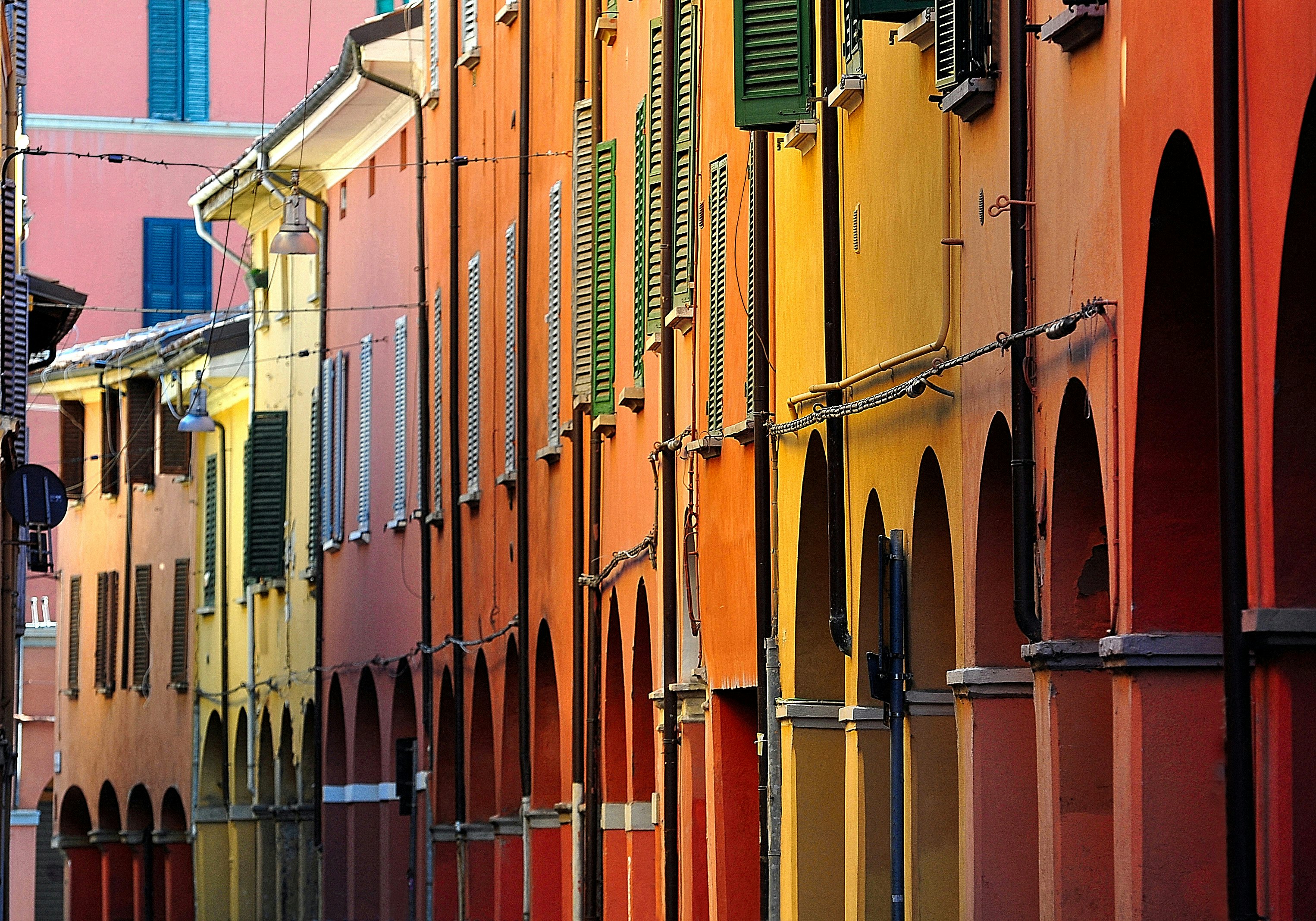A new way to see Bologna's porticoes, one of Italy's newest Unesco World Heritage sites

Feb 11, 2022 • 4 min read

The newly-designated Unesco porticoes of Bologna © Julian Elliott Photography / Getty
Following a successful 2021 bid for Unesco World Heritage status – elevating Italy's total sites to a world-leading 58 – Bologna has just launched a newly designed guided walking tour that takes a deep dive into the best of the centuries-old porticoes that canvas the historic city center.

A new walking tour to highlight the new Unesco status
The 90-minute tours (€15) depart from Bologna Welcome's Tourist Information Point in Piazza Maggiore every Saturday at 4pm through April 9 (with expansion plans in the works as Covid restrictions begin to ease throughout Italy). Along with the new tour, a tourism scheme that offers two-for-one deals at participating hotels has also been implemented.
As the capital of what is arguably Italy's most important food region, the Unesco designation and new tour is a welcome shift from the usual epicurean conversation. On one hand, culinary tourism is the city's pane e burro, but along with that often comes a frustrating neglect of all the wonderful non-food-related attributes of the city: the oldest university in the world, a fascinating musical history, wonderful medieval architecture and, of course, its beloved porticoes. The Unesco win caps off a multi-year push for recognition beyond lasagna and visitors will now be able to learn so much more about the unique history of the city's defining feature.

Why the porticoes were initially built
The porticoes, a series of arched arcades that unravel under historic buildings across some 62 kilometers in total across the Northern Italian city, began to emerge in the 12th and 13th centuries to combat population growth mainly sparked by students attending the University of Bologna. By building roofs over the sidewalks, they could then extend the buildings across them, gaining precious square meters without having to build new buildings. The practice initially spread to other cities as well, but it was only Bologna where the practice wasn't eventually outlawed.
Explore the stunning villages and vistas of Southern Italy on this new hiking network
"In 1288, a Municipal Statute established that the existing porticoes should be maintained and that any new building should include its own portico from then on," explains Bologna architect Federica Legnani, who also coordinated the Unesco bid for the city. "Thanks to this decision, porticoes flourished and became the permeating urban element we can appreciate today."
The history of the portico architecture
Throughout the centuries, Bologna's porticoes came in several incarnations: Mediaeval wooden-porticoes over buildings; Gothic and Renaissance porticoes integrated into buildings, 14th century beccadelli (semi-porticoes without columns) and 19th-century porticoes featuring court-architecture. They reach as high as nearly 10m, squeeze through spaces as narrow as 95cm and stretch as long as nearly 4km (the world's longest, featuring some 664 arches, leading up to the Sanctuary of the Madonna di San Luca). The new tour will point out intricate details among the arcades – most of which go unnoticed by those simply walking the city streets or ducking under the porticoes for shelter from the elements.

Look up but also look down
"The floor of the Portico del Pavaglione is made from large slabs of red stone from Verona, within which you can trace beautiful fossils trapped there for ages," says Legnani. "Palazzo del Podestà in Piazza Maggiore has colossal pillars decorated with thousands of sculpted flowers. Look closely and you can find some faces hidden in the center of the flowers - they are the portraits of the merchants who were forced to pay for the renovation of the building in the 15th century."
While the tour focuses on highlights like the 18th century frescoed portico at Piazza Cavour, not all of the newly Unesco-designated porticoes are elaborately decorated masterpieces dating back centuries.
Where to find your favorite pasta shape

Go beyond Bologna for even more variety
In the suburban district of Barca, for example, the porticoed building known as "Il Treno" is a striking piece of post-war urbanism that counts as the lone contemporary representative in the Unesco site. The snaking, 600m-long reinforced concrete edifice was designed by Bolognese architect Giuseppe Vaccaro and inaugurated as a workers residence in 1962, greatly expanding the city's suburban reach and redefining the idea of popular architecture. From a drone's viewpoint, its curved design evokes a turning train – hence the nickname.
While plans are in the works to expand the tour to cover the entirety of the Unesco World Heritage site, for now, fans of modern architecture must journey 5km west of Piazza Maggiore on their own.
But venturing into the burbs doesn’t mean you'll miss out on the city's famed ragú, tortellini and mortadella – the restaurants out that way are good, too!
Insider tips for the best things to do in Italy
You might also like:
The gorgeous destinations that have a special place in Italians' hearts
I've visited more than 70 Unesco World Heritage sites - these are the best
10 stunning World Heritage sites that are in danger
Safety recommendations and restrictions during a pandemic can change rapidly. Lonely Planet recommends that travelers always check with local authorities for up-to-date guidance before traveling during Covid-19.





